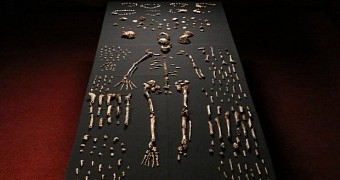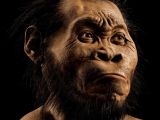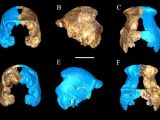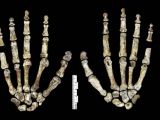A new study in the journal eLife announces the discovery of a previously unknown human species that lived many millennia ago in what is now South Africa.
The species was documented based on skeletal remains recovered from a cave not far from the city of Johannesburg in South Africa's Gauteng province, in the Cradle of Humankind World Heritage Site.
Archaeologists have until now retrieved around 1,550 bones belonging to as many as 15 individuals, both adults and children. The bones look nothing like the skeleton of modern humans.
They also don't appear to originate from any of the Homo species on record, which is why researchers classified them as belonging to an entirely new species of hominin that went extinct long ago.
“We found adults and children in the cave who are members of genus Homo, but very different from modern human,” University of Colorado specialist Charles Musiba explained in a statement.
These long-lost relatives of ours looked like hobbits
The newly discovered hominin species, Homo naledi, stood about 1.5 meters (5 feet) tall and weighed around 45 kilograms (100 pounds).
Judging by the size of the skulls recovered from South Africa's Rising Star Cave, experts estimate Homo naledi had a brain about the size of an orange, i.e. around 500 cubic centimeters (30.5 cubic inches).
Just to put things into perspective, we, modern humans, have brains ranging in size from 1,200 to 1,600 cubic centimeters (73 to 97 cubic inches). So, no, Homo naledi wasn't exactly what some would call brainy.
The adult and the children skeletons that led to the discovery of this new hominin species suggest Homo naledi had feet well suited for life down on the ground, but also hands perfect for life high up in trees.
It's a mixture of features that researchers are yet to make sense of. Until they do, they can't say where the species fits on our evolutionary tree.
“The hand has human-like features for manipulation of objects and curved fingers that are well adapted for climbing, but its exact position on our family tree is still unknown,” said researcher Caley Orr.
Their chest was similar to that of chimpanzees, but their hands and their feet followed the proportions of the anatomy of modern humans with respect to the rest of the body.
These ancient humans weren't complete savages
Granted, scientists still have a lot to learn about Homo naledi and its ways. They haven't even managed to determine exactly when it was that the species emerged and then went extinct.
Based on the arrangement of the skeletons in the cave where they were discovered, however, they think these lost relatives of ours weren't complete savages.
Rather, it appears that the bodies were deposited in the cave on purpose, most likely in a ritualized burial. Such behavior has so far only been confirmed in modern humans.

 14 DAY TRIAL //
14 DAY TRIAL // 




